A Tree Trimmer Dies When He is Pulled into a Wood Chipper.
California Case Report: 08CA005
Summary
A Hispanic male tree trimmer died after he was pulled into a wood chipper while feeding branches into the machine. The victim was part of a two-man crew that was trimming trees along a residential street when the incident occurred. The wood chipper had a built-in safety device called the feed control bar that was located on the top and both sides of the feed chute, however it is not known if it was working at the time of the incident. The CA/FACE investigator determined that, in order to prevent future occurrences, employers, as part of their Injury and Illness Prevention Program (IIPP), should:
- Ensure that employees never operate a wood chipper alone.
- Ensure that all employees stand to the side of the feed table when feeding trimmings into the wood chipper.
- Ensure that employees are thoroughly trained and tested on the operation of wood chippers.
- Ensure that a documented inspection report is completed every time a wood chipper is used and kept on file.
Introduction
On April 8, 2008, at approximately 2:30 p.m., a 46-year-old Hispanic male tree trimmer died when he was pulled into a wood chipper. The CA/FACE investigator learned of this incident on April 9, 2008, from the Los Angles District Office of the Division of Occupational Safety and Health (Cal/OSHA). On April 24, 2008, the CA/FACE investigator visited both the site of the incident and shop location where the wood chipper was stored. The company safety manager and five employees were interviewed, and the wood chipper was viewed and photographs obtained. A witness who was driving by the incident scene was interviewed on a later date.
The employer of the victim was a city in a suburb of Los Angeles. The employer had been in business for over 100 years and had over 900 employees. The victim had been employed with the city as a tree trimmer for nine years in the parks and recreation department. According to his employer, he had a total of over 16 years experience as a tree trimmer. The victim was born in Mexico and had been in the United States for approximately 29 years. According to his employer, he was fluent in both English and Spanish.
The employer of the victim had a safety program and a written IIPP. Employee training in the safe operation of this wood chipper was given by the manufacturer representative at the time the machine was purchased in 2002. There was no written documentation of this initial training. There were written task-specific work procedures for tree trimming, but none were available for the CA/FACE investigator to review at the time of the investigation. Safety meetings were held monthly and attendance by employees was documented. The employer was unable to provide the content of the monthly safety trainings. Employee proficiency in job tasks after training was evaluated through supervisory observation.
Equipment Involved in Incident
The equipment involved in the incident was an enclosed dump truck with an attached wood chipper (Morebark Blizzard, Model 12). The wood chipper was designed with an in-feed chute that was elevated approximately two feet above the ground. As tree branches were manually fed onto the feed table in front of the chute, a set of feed wheels grabbed the branches and fed them into the rotating blades attached to the chipper drum. The chipped wood was blown through a discharge chute into the bed of the enclosed dump truck. The wood chipper had a safety control bar located along the top of the in-feed chute and down both sides. The safety bar controlled the flow of hydraulic fluid to the motor that drove the chipper’s feed wheel. When activated, the safety bar instantly stopped and reversed the feed wheels. There were two cables attached to the safety bar that protruded through drilled holes in the top of the in-feed chute. When these cables were pulled, they stopped and reversed the feed wheels. These cables are commonly referred to as the “last chance cables”. Located directly behind the chipper was another truck that had an aerial boom with a bucket attached. The bucket was used to elevate workers into the trees so they could cut off the desired branches.
Investigation
The site of the incident was an east/west residential street within a suburb of Los Angeles. A two-man crew was assigned to trim and prune the Japanese cypress trees along the designated streets. On the day of the incident the victim was feeding cut branches into the wood chipper while his co-worker was in an elevated bucket directly above him trimming the Japanese cypress trees. According to a witness, the victim was feeding branches into the wood chipper while standing in line with the in-feed chute. After the witness looked away and back again, he observed the victim bent over face down with his arm fully extended into the feed chute. The witness alerted the co-worker with his car horn, and then observed the feet of the victim protruding from the wood chipper. The co-worker in the elevated bucket and the witness both called 911. Emergency response crews could not extract the victim from the wood chipper at the incident scene. The victim was removed from the wood chipper at the coroner’s office after the wood chipper was dissembled. The safety bar was not tested prior to disassembly of the wood chipper to determine if it was operational.
Cause of Death
The cause of death, according to the death certificate, was multiple blunt injuries.
Recommendations/Discussion
Recommendation #1: Ensure that employees never operate a wood chipper alone.
Discussion: A safety watch (additional worker) is mandated in many high-risk occupations to help prevent injuries. When the wood chipper is in operation, at least one worker in addition to the operator should be placed in the immediate vicinity of the work area and in close contact with the operator. In this incident, there was a co-worker but he was not working with the victim at the wood chipper. An additional person stationed near the chipper may have prevented the victim from feeding material immediately in front of the in-feed chute, or may have been able to activate the safety bar before the victim made contact with the chipper blades.
Recommendation #2: Ensure that all employees stand to the side of the feed table when feeding trimmings into the brush chipper.
Discussion: In this particular case, a witness observed the victim standing directly behind the feed table in front of the chute as he fed tree branches into the wood chipper. The feed table provides an important measure of safety by increasing the distance between the feed rollers and the operator. The wood chipper was equipped with a safety stop and reversing feed control bar located across the top and down each side of the feed chute. The operator could easily activate this safety device while standing at the side of the feed table. However, if standing directly in front of the feed table, the operator is out of reach of this safety device. Also, if an operator should place any part of his/her body on the feed table, the risk of getting snagged or dragged into the chipper blades is greatly increased and a worker caught by the hands could not activate the quick stop device. The correct and safe feeding pathway is from the side, and the operator should walk away immediately following feeding as depicted in the following illustration.
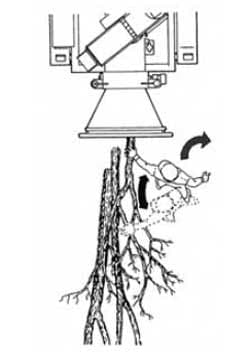
|
|
(Courtesy of Michigan Occupational Safety and Health Administration, Pub OSC-6125).
|
Recommendation #3: Ensure that employees are thoroughly trained and tested on the operation of wood chippers.
Discussion: The victim in this case had received initial training on the wood chipper when it was purchased in 2002. There was no documentation that indicated any additional or refresher training had been offered to employees since the chipper was purchased. A serious incident can occur if the worker loses balance and falls forward into the feed chute, reaches too far into the feed mechanism, or becomes entangled or pushed by branches and limbs that are being pulled into the chipper. The risk can be minimized if workers are trained and retrained (at least annually) in safe feeding techniques that include the following:
- Never place hands or feet inside the feed chute;
- Always stand to the side of the in-feed hopper when feeding the wood chipper. This minimizes the risk of entanglement in branches and allows quick access to the feed control bar to turn off or reverse the feeding mechanism. (Because of differences among machines, the manufacturer’s operating manual should be consulted for guidance. Safe feeding of some disc-type chippers requires the worker to be on the right side);
- Immediately walk away once the machine has grabbed the material and been fed through the chipper knives;
- Feed brush and limbs into the in-feed hopper butt end first; and
- Lay short/small material on top of longer material to feed or use a push paddle to push short or thorny brush through the in-feed hopper.
Safe work practices can be assured through programs of training, supervision, rewards, and progressive disciplinary measures.
Reference
- California Code of Regulations, Subchapter 7. General Industry Safety Orders Group 3. General Plant Equipment and Special Operations Article 12. Tree Work, Maintenance or Removal §3424. Mobile Equipment. (c) Brush Chippers.
- New York FACE Report https://www.cdc.gov/niosh/face/stateface/ny/05ny034.html
- California FACE Report https://www.cdc.gov/niosh/face/stateface/ca/00ca010.html
- NIOSH Hazard ID: Injury associated with working near or operating wood chippers. https://www.cdc.gov/niosh/docs/99-145/
Exhibits
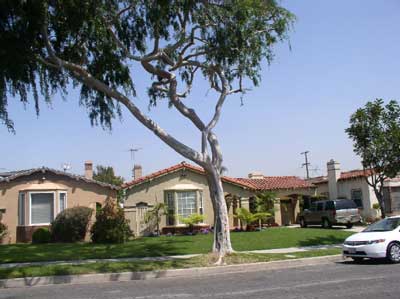
|
|
Exhibit 1. The street where the incident occurred |
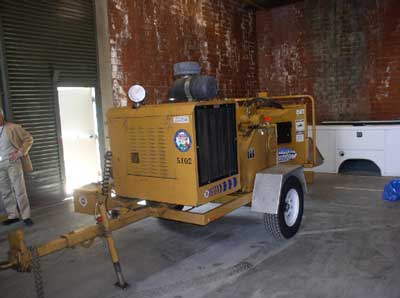 |
|
Exhibit 2. The brush chipper involved in the incident. |
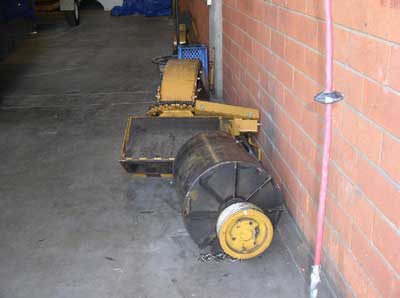 |
|
Exhibit 3. The discharge chute and drum that were removed from the brush chipper during the initial investigation. |
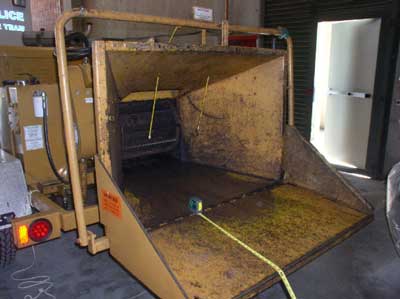 |
|
Exhibit 4. The in-feed chute and shroud that |
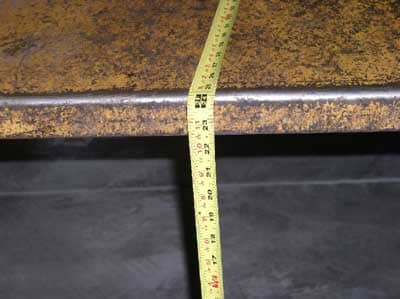 |
|
Exhibit 5. The measurement of the in-feed |
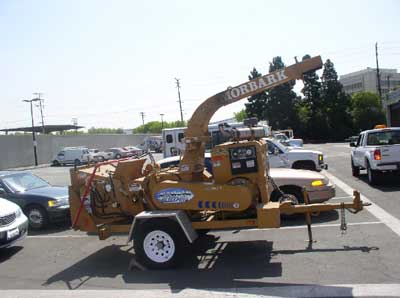 |
|
Exhibit 6. A fully assembled brush chipper similar
to the one involved in the incident. |
California Fatality Assessment and Control Evaluation (FACE) Project
The California Department of Public Health, in cooperation with the Public Health Institute and the National Institute for Occupational Safety and Health (NIOSH), conducts investigations of work-related fatalities. The goal of the CA/FACE program is to prevent fatal work injuries. CA/FACE aims to achieve this goal by studying the work environment, the worker, the task the worker was performing, the tools the worker was using, the energy exchange resulting in fatal injury, and the role of management in controlling how these factors interact. NIOSH-funded, State-based FACE programs include: California, Iowa, Kentucky, Massachusetts, Michigan, New Jersey, New York, Oregon, and Washington.
To contact California State FACE program personnel regarding State-based FACE reports, please use information listed on the Contact Sheet on the NIOSH FACE web site. Please contact In-house FACE program personnel regarding In-house FACE reports and to gain assistance when State-FACE program personnel cannot be reached.
